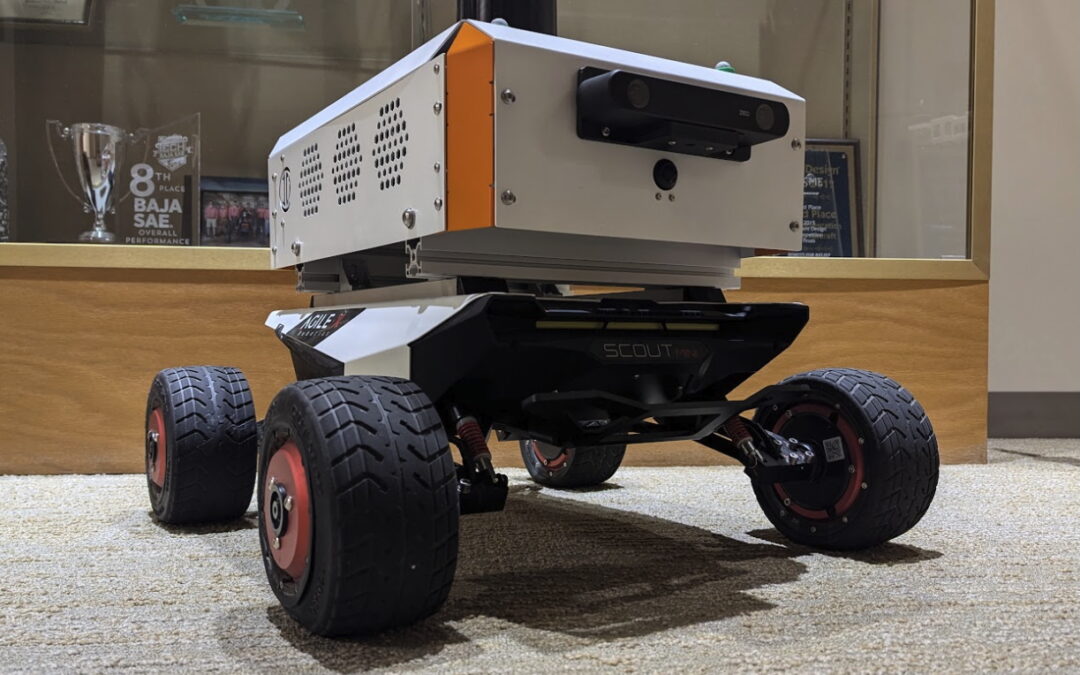
InDro in Atlanta at ICRA – IEEE International Conference on Robotics and Automation
By Scott Simmie
We are at ICRA 2025 – billed as “the premiere conference in robotics and automation.”
With about 40,000 attendees, there are some conferences out there that are even larger. But few are more influential when it comes to R&D. Some 3,000 research papers have been submitted for the show, with massive poster displays showing off cutting-edge research and new use-cases.
InDro is represented at this show by our Head of R&D Sales, Luke Corbeth. We spoke with Luke about why this conference is so important in this edition of our Sound Byte micro-podcast.
PAPERS, POSTERS, BREAKTHROUGHS
All of that research may not be as immediately appealing as the latest humanoid robot, but some of it might well improve the next generation of humanoids or reveal new use-cases. Research unveiled at shows like these – and particularly at ICRA – often finds a pathway from R&D into real-world applications..
“It’s really about creating that knowledge transfer,” explains Corbeth. “Others can build on top of what was discovered instead of having to do that work over again. And, that ultimately lays the groundwork (not only) for improvement in our field but also collaboration as well between academia, industry and others.”
And while Corbeth will be checking out the poster presentations (and robots!) when he has a moment to slip away from the booth, most of his time will be spent talking with potential clients about recent InDro innovations.
Those on display at the show include InDro Controller – our user-friendly interface for remote teleoperations and autonomous missions. Controller is the result of an immense amount of Front and Back-End development. It allows for the rapid plotting of repeatable autonomous missions with a few clicks of a mouse. Actions, such as zooming in on a point of interest or scanning a particular item for thermal anomalies, can be set up in a flash. And the software immediately detects any new sensors added to a robot (or drone) and allows for a fully customisable dashboard to display and save the data they acquire.
We’re also showing off our new R&D research drone. We developed this product, which runs on ROS2, over the past two years. Because it’s fully Open Source and has powerful onboard compute, it’s the perfect tool for researchers who want to test new applications and code. There are very few drones that have been developed specifically for R&D purposes, so we’re pleased to be offering this (and have already sold units to US researchers).
THE BIG REVEAL
We’re most excited, however, to be showing our new Cortex module in public for the first time.
“It’s a brain box for virtually any robot or drone,” says Corbeth. “So the idea behind Cortex is it’s extremely lightweight. It has really capable compute in the (NVIDIA) Orin NX in addition to 5G connectivity and power distribution. So we can turn virtually any Uncrewed Ground Vehicle or Uncrewed Aerial Vehicle into a robot capable of teleoperation and autonomy with a little bit of software and some sensor integrations.”
We’re not releasing full specs yet, but we’re incredibly excited about the capabilities offered by Cortex. It allows not only for remote teleoperation, but for the near-instant integration of additional sensors on UGVs and UAVs without all the coding. We can also bundle Cortex with additional software stacks like InDro Autonomy. And, of course, it plays nice with InDro Controller.
If you follow InDro, you’ll be aware we previously developed the popular InDro Commander, which carries out similar functions. Cortex is the logical descendant of that R&D, putting even greater power into the smallest package possible.
Though commercial release is scheduled for later this year, we’ve already had inquiries and pre-orders. Here’s a peek at Cortex on display at ICRA 2025:

INDRO’S TAKE
We choose our conferences carefully. ICRA is truly at the centre of cutting-edge R&D and is a must-attend for us. Not only is it a great opportunity to expand our client base, but also a chance to see the latest and best research in the sector.
“The show has come a long way since we were last here,” says Corbeth. “There has been an incredible amount of innovation in such a short period from the companies that exhibit and the researchers that are presenting. Notably, a lot of advancement in humanoids, grippers and solutions like Cortex that make it easier to develop, create and deploy robotics systems.”
Interested in more information about Cortex? You can hit us up here.












